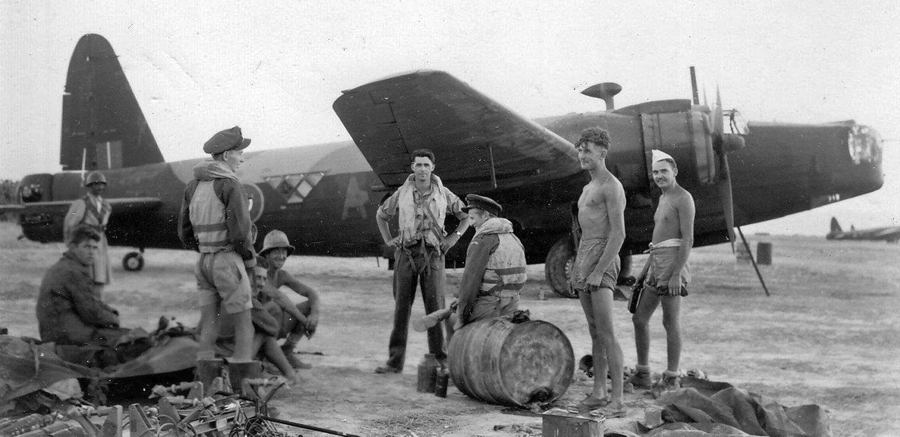 Bomber Command
Bomber Command  |
Aircrew Chronicles
|
Aircrew Losses
|
Nose Art
|
BCATP
|
Lancaster
|
Media
|
Aircrew Chronicles
|
Aircrew Losses
|
Nose Art
|
BCATP
|
Lancaster
|
Media
 Bomber Command
Bomber Command  |
Aircrew Chronicles
|
Aircrew Losses
|
Nose Art
|
BCATP
|
Lancaster
|
Media
|
Aircrew Chronicles
|
Aircrew Losses
|
Nose Art
|
BCATP
|
Lancaster
|
Media
420, 424, and 425 Squadrons were flying Wellington Bombers with Bomber Command when, during June 1943, they became part of 331 Wing RCAF, were removed from Bomber Command's control, and flew to Tunisia, North Africa to prepare for the invasion of Italy.
Conditions in Tunisia were very challenging. The RCAF Squadrons operated from remote, hastily prepared airfields -with no paved runways or permanent structures. Personnel experienced high daytime temperatures, blowing sand on those occasions that the strong dry, hot, and sand-laden 'Sirrocco' winds blew north from the Sahara Desert, and freezing temperatures at night.
Maintaining the aircraft was difficult in the extreme, particularly as the desert conditions played havoc with aircraft engines. All ranks lived in tents and were subject to plagues of flies -day and night. There were no off-duty amenities -such as pubs and dances that were readily enjoyed by the crews in England.
During October 1943, the aircrew and ground crew of the three squadrons returned to England aboard the SS Samaria, a former trans-Atlantic ocean liner built for Cunard Line that became a Royal Navy troopship during the war. Their Wellingtons were left behind to be used by the RAF. The three RCAF squadrons were 're-equipped' with the Halifax Mk III upon their return to Bomber Command.
|
331 Wing RCAF Aircrew
331 Wing's ORB's (Daily Diaries) while in North Africa |
